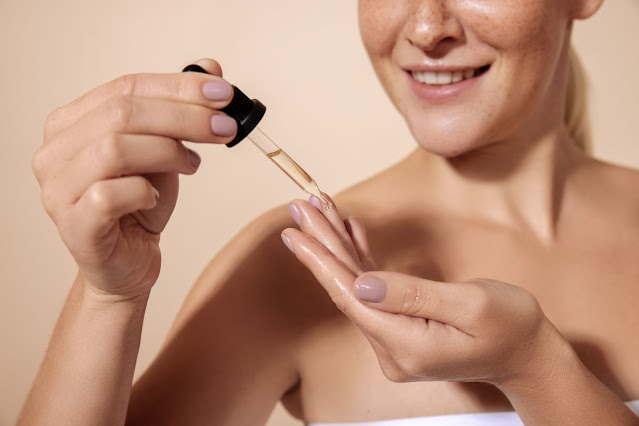
Salicylic Acid Skin Care Benefits – Why is Salicylic Acid Good for Skin?
Salicylic acid isn’t new to the beauty industry, but it has a loyal following among beauty experts, journalists, estheticians, and everyday beauty enthusiasts. With its ability to fight blemishes, remove dead skin cells, and combat excess oil, it’s no wonder this acid is considered a skin savior.
Even if you’ve never used or heard of salicylic acid, you’ll be dying to get your hands on it. Read on to learn more about this skin-rejuvenating knight in a bottle.
What is Salicylic Acid?
Salicylic acid is the only known and studied beta-hydroxy acid, also known as a BHA, that is extracted from aspirin or willow bark. It’s different from other alpha hydroxy acids (AHAs), such as glycolic acid, because salicylic acid works deep in the skin to clear pores of dirt, bacteria, and other germs that can build up and cause blemishes and breakouts.
Now for the science: If you understand the structure of salicylic acid, you’ll understand how it differs from AHAs and its benefits. Beta hydroxy acid means the hydroxyl group is separated from the acid by two carbon atoms, rather than just one like alpha hydroxy acids, making its structure more soluble in oil.
It’s the structure of the acid that makes it so effective. Its oil-solubility means it can penetrate deep into the layers of the skin and dissolve the “glue” that holds dead skin cells together. If these cells are not cleared and removed, they can build up and cause skin imperfections such as spots, patches of rough skin, and dull-looking skin. This makes it easier to remove these cells and reveal the radiant complexion of new skin!
What are the benefits of salicylic acid for skin?
Salicylic acid has many benefits for skin, most notably its ability to fight acne and other breakouts. You can find out more about the benefits of salicylic acid for skin here.
It exfoliates the skin
Salicylic acid exfoliates extremely well. It differs from AHAs in that it is oil-soluble and can penetrate into the lower layers of the skin. It opens up the pores and loosens the bonds that hold dead skin cells together, making it difficult for manual exfoliation to peel them off.
It fights blackheads and whiteheads
As mentioned earlier, salicylic acid works deep within the skin, making it easier to cleanse the skin of dirt, bacteria, and product buildup. This means that skin imperfections like blackheads and whiteheads are treated and eliminated much more effectively than things like cysts or other pimples that are beneath the surface. It helps a little bit to calm breakouts, and reduce their size and redness, thanks to its antibacterial and anti-inflammatory properties.
It cleanses the skin thoroughly.
Since salicylic acid is oil-soluble, it can penetrate deeper into the skin and dissolve desmosomes, which are the glue that holds dead skin cells together. Unlike AHAs, which exfoliate the outer layer of the skin, BHAs exfoliate and cleanse deep within the pores, making for clearer skin by getting deep into the pores and allowing them to heal themselves from the inside out.
How to Use Salicylic Acid?
Salicylic acid is found in a variety of products, including masks, gels, washes, cleansers, and more. This is beneficial because it allows you to find the right salicylic acid product that fits into your routine and contains the right ratio of salicylic acid that your skin can tolerate. There are some tips and suggestions for using salicylic acid, here are some of them:
Tips
Find the salicylic acid product that works best for you and your skin
Incorporate salicylic acid into your daily routine slowly to avoid irritating your skin. Start using BHA twice a week
Use over-the-counter products that contain 0.5% – 2% salicylic acid
If you have any concerns or need medical advice, consult your primary care physician or dermatologist before incorporating salicylic acid into your daily routine.
Use salicylic acid if your skin is prone to blemishes
BHA and AHA are used together. These two acids work at different layers of the skin, so if used in the right amounts, they won’t cause much of an impact on the skin.
What you shouldn’t do
Don’t use salicylic acid if you are taking certain medications, such as blood thinners
Don’t use salicylic acid while pregnant or breastfeeding
Don’t apply salicylic acid to broken skin, such as: B. Cuts and scratches, avoid the mouth, eyes, and nose.
Don’t use salicylic acid too often as it can cause skin sensitivity and dryness
Don’t use salicylic acid on broken skin
What skin types can use salicylic acid?
Oily and blemish-prone skin
Salicylic acid’s excellent exfoliating and antibacterial properties undoubtedly make it a great enemy of acne. It treats oily and acne-prone skin by dissolving excess sebum, the natural oil in the skin, bacteria, and dirt that clogs pores and causes blackheads and other breakouts.
These can be treated with over-the-counter products. However, if cystic acne is a problem, you can choose to use a stronger product prescribed by a dermatologist or doctor.
Dry skin types
Dry and sensitive skin types should use salicylic acid with caution. It is a very strong BHA and can quickly cause irritation if used too often.
If you have dry skin but still want to use a BHA for the cleansing and exfoliating effects, you should use it in the form of a face wash or cleanser because they will be rinsed off and will not stay on the skin long enough to cause…
You should not use salicylic acid if you have sensitive skin, are pregnant, or are taking medications such as blood thinners.
What are the side effects of salicylic acid?
Salicylic acid is a keratolytic, an exfoliant that causes the outer layer of the skin to peel off. This peeling effect is exactly what you would expect from this facial acid, but there are some rare side effects you should be aware of if you experience any of the following:
Severe headaches and thinking problems
Tinnitus, hearing problems
Severe stomach cramps, vomiting, or diarrhea
Dizziness or feeling like you are going to pass out
Shortness of breath
Swelling of the face, lips, and eyes
If you find yourself experiencing any of these side effects, see a doctor immediately and stop using salicylic acid.
These are the common side effects you can expect:
Changes in skin tone and colour (usually lightening)
Mild skin irritation, rash, blistering or peeling
These side effects are all mild and you don’t have to worry too much. If they get worse, stop using salicylic acid and consult your GP for further advice.
So here you can learn more about the wonder malic acid, whose popularity has only grown over the past few decades since its introduction to the beauty industry.
Due to its structure, salicylic acid can penetrate deeper into the skin, clean out the pores and remove dead skin cells. This will give your skin a healthy glow and blemishes, blackheads and spots will be a thing of the past.
Despite the many benefits of salicylic acid, it should be used with caution. While they are suitable for certain skin types, such as: For example, while it is good for skin prone to blemishes and acne, it can also cause skin irritation and dryness, which can lead to discomfort. Beauty experts will first recommend that you introduce BHAs into your daily routine slowly and steadily. Perhaps once or twice a week will be enough in the beginning. If no irritation occurs, the dosage can be increased to several times or even daily. A small request, because your skin will thank you.


